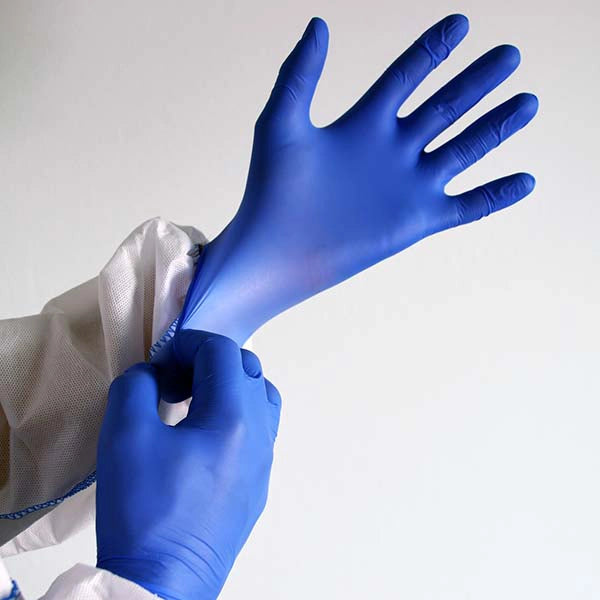When should sterile gloves be worn? When donning sterile gloves, how should the second glove be handled? What makes medical gloves sterile?
Sterile processes are necessary for patient care activities in order to keep the environment free of germs and to avoid infection. Donning sterile gloves is a major component of preventing and minimizing infection during operations or invasive procedures.
This quick guide is here to help you learn how to don sterile gloves and know when putting on sterile gloves is critical.
What are Sterile Gloves?
Sterile gloves are a type of disposable glove that are devoid of any germs and free from all microorganisms. They aid in the prevention of wound infections and limit the danger of blood and bodily fluid pathogen exposure for healthcare professionals.
What are the Benefits of Gloves?
Sterile gloves are most commonly worn for a reduction in the transmission of microorganisms between health-care workers and patients, and vice versa. Sterile latex free surgical gloves help in minimizing the risk of cross contamination and are instrumental in wound and surgical site hygiene.
Communicable Disease Prevention
Sterile latex gloves are used for the prevention of spreading communicable diseases such as hepatitis B, Hepatitis C, HIV, and AIDS. Gloves are an important part of infection control. Proper hand protection prevents you from making contact with bodily fluids, blood, and potentially infectious materials which can spread disease.
Infection Control
Sterile nitrile gloves also contribute to infection control by limiting the transmission of microorganisms between health care workers and patients. They are used as a barrier from potential pathogenic microorganisms including bacteria and viruses.
When to Wear Sterile Gloves
When coming into touch with a sterile spot, tissue, or bodily cavity, sterile medical gloves must be used. They are required for just about any surgical intervention and invasive contact with the human body. Because skin cannot be sanitized, surgical staff must wear disposable sterile gloves.
Double-Gloving
Wearing two pairs of sterile latex surgical gloves during invasive medical procedures, also known as "double gloving," is a technique used by healthcare providers to reduce their danger of bloodborne pathogen exposure. The glove underneath the top glove acts as an extra layer of protection when the glove integrity is breached during an invasive surgery or medical procedure. Double gloving has been shown to lessen the risk of exposure and has become standard practice.
Sterile Glove Safety
The following precautions must be considered before purchasing and wearing sterile latex free gloves. This will ensure your personal protection and patient safety meet the highest standards.
1. Choose tight-fitting gloves. Picking up objects, such as surgical instruments, should be easy. These gloves come in multiple sizes. Make sure you choose the size that is right for your hand fit.
2. Always wash hands before putting on sterile gloves and immediately after their removal. Wearing sterile gloves does not replace protective handwashing. Gloves are not a substitute for good hand hygiene.
3. Make sure all tools and supplies are ready before donning gloves.
4. Practice latex allergy precautions by asking the patient ahead of time if they are allergic or choose another type of latex free sterile gloves to use devoid of latex proteins.
How to Put On Sterile Gloves
Once the above safety measures are taken, you are now ready to don sterile gloves. Use these steps to ensure you are not harboring or transferring any microorganisms that can cause infection.
How to Apply Sterile Gloves
Step 1 - Remove all jewelry from your hands.
Step 2 - Avoid wearing any type of artificial nails, long nails, or fingernail polish.
Step 3 - Cover any open sores or abrasions. Make sure your hands are clear of open lesions and skin fractures.
Step 4 - Fold sleeves up 2-3 inches above the elbows or wear short sleeves.
Step 5 - Wash hands with a surgical hand scrub.
Step 6 - Clean a surface to prepare opening a sterile glove package. Keep all sterile items above the waist.
Step 7 - Check the glove package to ensure it is dry, not expired, and intact. It should be free from tears or signs of being opened.
Step 8 - Peal open the package from the top down avoiding contamination of the inner package.
Step 9 - Place the inner package on the prepared work surface and open the packaging.
Step 10 - Touching the inside cuff only, pick up the glove for the dominant hand and put it on pulling it all the way up to the wrist avoiding any touch outside the glove.
Step 11 - Touch the inside cuff only of the remaining glove with your gloved hand, pull it on your non-dominant hand and pull it all the way up to the wrist.
Step 12 - To avoid touching non-sterile objects while wearing sterile gloves, hold gloved hands together keeping them above waist level and at least 6 inches (15.24 cm) away from clothing and surfaces.
How to Remove Sterile Gloves
The following steps help prevent contamination of your hands and surfaces while removing gloves.
Step 1 - Grip the outside of the cuff or palm of the glove and carefully take it off by turning it inside out and inserting it into the gloved hand.
Step 2 - Using your ungloved hand, insert your fingers inside the other glove, and pull the glove off from the inside out.
Step 3 - Dispose the gloves and wash hands immediately using an antimicrobial soap.
Wash Hands Immediately
Washing hands thoroughly after glove removal will get rid of any powder from the gloves which causes skin irritation. It also removes any contamination from your hands that may have leaked through pinholes.
Watch this video on donning sterile gloves for a complete demonstration.
Additional Important Safety Measures
1. Do not use alcohol-based products on gloves or wash them as an attempt to sterilize gloves for additional use.
2. Change gloves after every patient and every procedure.
3. Remove and change gloves immediately when they become torn or punctured.
4. Powdered gloves should not be used in the healthcare setting because the protein allergens in NRL (natural rubber latex) bond to the cornstarch powder and may become airborne. Use sterile powder free gloves instead.
Different Types of Sterile Medical Gloves and Their Uses
1. Sterile surgical gloves are designed for the use of surgical procedures. They are made of sterile latex or a synthetic latex-free alternative such as nitrile or vinyl.
2. Sterile exam gloves are made to be used for minor surgery, medical or dental procedures with a potential of exposure to blood and bodily fluids, and for the preparation of pharmaceuticals. Choices include sterile latex or a synthetic latex-free alternative such as nitrile or vinyl.
When Should Sterile Gloves Be Worn?
The most important time to wear sterile gloves is when there will be contact with blood, bodily fluids, mucous membranes, non-intact skin, or possibly infectious substances. Applying sterile gloves properly will protect you and others.
When to Put On Sterile Gloves
Put on sterile gloves before any sterile procedure, before contact with a patient with exposure to biological fluids and pathogens. Practice the putting on sterile gloves technique before you encounter a high-risk situation.
When to Remove Gloves
Always remove gloves after caring for each patient and between procedures to prevent cross-contamination. If you notice a tear or puncture, change gloves as soon as possible to reduce germ transmission.
Not sure how to throw away gloves after removal? Read this article on how to dispose of nitrile gloves next.




